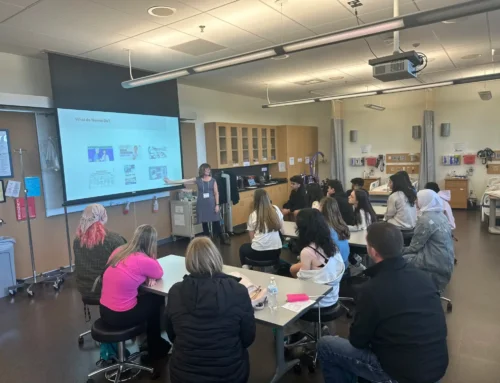The world has changed profoundly since 2020. COVID-19 caused a vast shift in how education is structured. For the past two years, plans for in-person learning have been challenging for educators, students, and families. There has been a strong focus on and move to online and hybrid learning. This change has caused educators at all levels to rethink the purpose of technology and its use in educational settings. The goal of educational technology is not to live at higher levels of tech integration, or even to use every available app on the market, but rather, to provide a variety of technologies and cognitive tasks that scaffold toward and align with our learning standards. Therefore, identifying specific learning targets, and designing classroom environments around these goals, is an effective strategy.
As educators, our main focus is to teach; that is, to connect learning with the positive development of the community and build positive student and family relationships. Focusing too much on technology can be overwhelming for everyone, it is important to remember that technology is a tool, not an end to a means.
“Technologies provide rich and flexible media for representing what students know and what they are learning. A great deal of research on computers and other technologies has shown that they are no more effective at teaching students than teachers, but if we begin to think about technologies as learning tools that students learn with, not from, then the nature of student learning will change.” How Does Technology Facilitate Learning?
There are a wide array of technology applications that can have a powerful and transformative impact in areas of teaching and learning, student achievement, engagement, and motivation. The question is, how do we harness the power of technology to positively impact our students? Great lessons begin with planning that incorporates strong instructional best practices. This includes being thoughtful when it comes to reflecting on the effectiveness of how to integrate technology into the classroom. Educational technology frameworks can act as a strong guide in our instructional decision making, meet: the SAMR Model.
SAMR is an acronym for Substitution, Augmentation, Modification, and Redefinition developed by Dr. Ruben Puentedura who researched this topic. The intention of the model is to ensure technology is an integral component of everyday instruction. This framework addresses educational technology through four stages: substitution, augmentation, modification, and redefinition.
To become more familiar with this model, I invite you to watch Dr. Ruben Puentedura talk about how he envisions teachers applying the SAMR model, “How to Apply the SAMR Model with Ruben Puntedura”. After viewing the video, take some time to reflect and explore the various technology integration frameworks to increase your awareness of the learning and teaching contexts to inform your teaching decisions.
- ISTE Standards and the Technology Integration Matrix
- The SAMR Model and the Technology Integration Matrix
- Bloom’s Cognitive Taxonomy and the Technology Integration Matrix
- TPACK and the Technology Integration Matrix
Questions:
Trinh Pham, NWESD Instructional Technology Specialist




